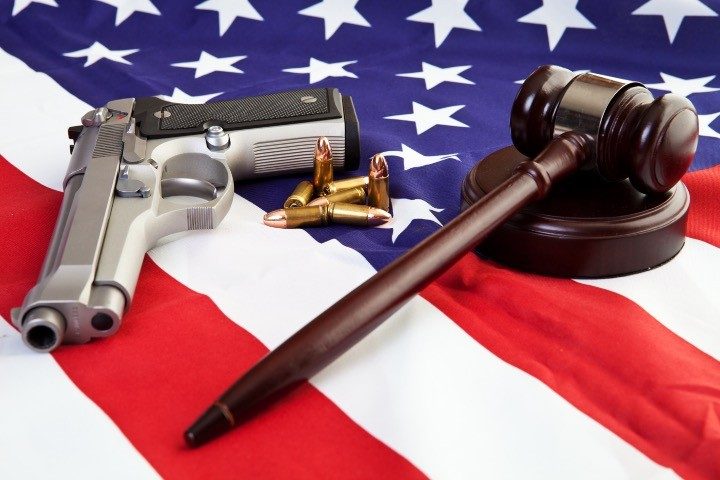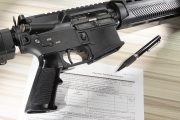
In its ruling to suspend enforcement of ATF’s pistol brace rule for 60 days, the U.S. Court of Appeals for the Fifth Circuit on Tuesday required the lower court to look more carefully at all the facts and then issue a decision on the matter. The appeals court strongly suggested that, based on the information it had, the ATF’s pistol brace rule was unconstitutional, but left the final decision in the hands of the lower court.
The appeals court provided plenty of reasons for its decision. First of all, in 2012, when pistol braces first began to be marketed to gun owners seeking to improve their accuracy when shooting a pistol, the ATF ruled that adding one to a pistol did not automatically turn it into a rifle.
Over time, however, and under pressure from the anti-gun Biden regime, the ATF reversed course and issued a “Final Rule” declaring, in essence, that adding such a brace to a pistol would in fact turn it into an automatic rifle, thus subjecting it to the onerous requirements of the 1934 National Firearms Act (NFA).
Secondly, in its 58-page ruling, the appeals court showed that the ATF exceeded its authority by “legislating” instead of “interpreting” the previous law:
The ATF incorrectly maintains that the Final Rule is merely interpretive, not legislative.… The Final Rule affects individual rights, speaks with the force of law, and significantly implicates private interests. Thus, it is legislative in character….
The Final Rule is a legislative rule.…
The character of the rule is legislative….
The Final Rule therefore must be set aside as unlawful or otherwise remanded [back to the lower court] for appropriate remediation.
This is important, because agencies may not make new laws. Only Congress can do that under the Constitution. Agencies are relatively free to “interpret” what Congress has ruled, but may not step outside those bounds. And that’s what the ATF, according to the appeals court, did.
The appeals court noted that there were many other lawsuits pending in other courts against the ATF’s Final Rule turning pistols into rifles to be covered under the NFA. However, claiming it did not “have all the required facts,” the court returned the case to the lower court:
It is already uncertain how many persons are now subject to these injunctions or how the ATF would enforce the Final Rule against non-enjoined parties.
There is a need for consistent application of the law, and this court may not have all the required facts. Accordingly, the district court is better situated to weigh the facts and fashion the most appropriate relief.
For the foregoing reasons, we REVERSE the order denying a preliminary injunction and REMAND with instruction to consider that motion expeditiously.
To ensure relative stability, we MAINTAIN the preliminary injunction pending appeal that the motions panel issued on May 23, 2023 [by the lower court], as clarified by this merits panel on May 26, 2023.
This court’s injunction will expire 60 days from the date of this decision, or once the district court rules on a preliminary injunction, whichever occurs first.
We direct the district court to rule within 60 days.
The net upshot of all of this legalese is simple: Gun owners affixing braces to their pistols may continue to do so without fear of crossing the ATF. The outcome is all but certain: In 60 days, or sooner, the lower court will finally and clearly rule against the pistol brace Final Rule, relieving (for the moment at least) gun owners’ concerns that they will be confronted by an ATF agent declaring that what they once perceived to be legal has now, by edict from on high, become illegal.
The ruling is a disappointment in one respect. Although much ink was spilled in the 58-page ruling about the NFA and its brother, the Gun Control Act of 1968, it was not even faintly implied that either of these noxious, unconstitutional laws would be challenged. United States v. Miller, the strange decision by the Supreme Court in 1939 that somehow the National Firearms Act of 1934 didn’t violate the Second Amendment when it clearly did, wasn’t even mentioned in Tuesday’s ruling.
That is an issue for another day, perhaps soon. For the moment, the ruling issued on Tuesday pushes back against the ATF, adding another successful restraint of the over-eager agency’s blatant attempt to infringe Second Amendment rights by “legislating” instead of “interpreting.”
“Said in its simplest terms,” wrote an attorney for the plaintiffs, “the Fifth Circuit has indicated that the Plaintiffs — Firearms Policy Coalition, Maxim Defense, and FPC’s individual members — are likely to defeat ATF’s pistol brace rule when the merits of this case are finally heard.”
Related articles:
Pistol Brace Owners Ignoring ATF Ruling
Recent Pistol-brace Rulings Against ATF Apply Only to the Plaintiffs



